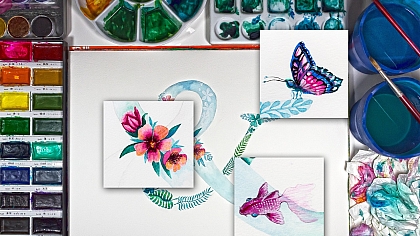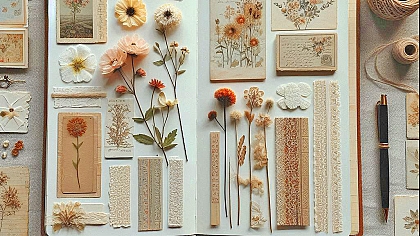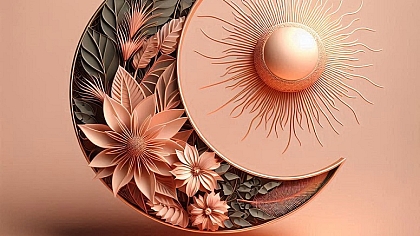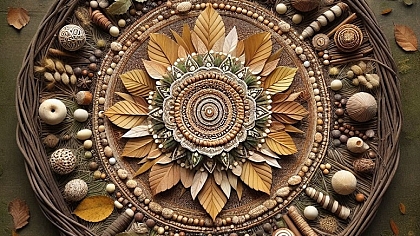
Transform Your Vintage Furniture: Creative Ways to Upcycle
Are you familiar with the concept of ‘upcycling?’ If you’re interested in furniture repair or modernization, it’s definitely a concept you’ll want to familiarize yourself with. Upcycling has become a popular method for giving new life to old furniture; not only does it allow you to express yourself, but it also promotes a more conscious approach to design.
The process involves transforming discarded or outdated items into something functional and aesthetically pleasing, increasing their value. So read on and find out how you can breathe new life into your old furniture and unleash your creativity.
What is Upcycling?
Think of “upcycling” as a combination of “upgrading” and “recycling.” It's the process of repurposing and reimagining unwanted items to create a product of higher quality than the original. Unlike recycling—which breaks down materials for recombination into new products—upcycling emphasizes innovation by turning your old furniture into a framework on which you can hang new, unique ideas.
The benefits extend beyond aesthetics; by reusing existing materials, we can lower our carbon footprint and contribute to a more sustainable future. Upcycling helps divert furniture from landfills and reduces the demand for new products, conserving the natural resources that go into furniture production.
Assessing Your Vintage Furniture
When it comes to finding the best piece to repair and reinvent, certain types of furniture lend themselves to transformation better than others. Chairs, tables, dressers, and cabinets are ideal candidates. Look for pieces with solid construction, unique features, or interesting shapes that inspire you. Classic mid-century modern or rustic farmhouse styles often provide a great foundation for taking tried-and-true styles and giving them a contemporary flair. Before diving into any project, assess the condition of the furniture.
Check for structural integrity by testing joints, legs, and overall stability. Look for areas that may require repair or restoration, such as chipped wood, scratches, or upholstery damage. Identifying what practical concerns need fixing upfront will help you plan your aesthetic transformation more effectively. You could have the most beautiful chair in the world, but you still don’t want it to wobble when you sit down.
Painting, Finishing, and Upholstering
One of the easiest ways to modernize vintage furniture is through painting or refinishing. Chalk paint can give pieces a soft, matte finish, while spray paint offers a sleek look with minimal effort. For wooden surfaces, refinishing can help restore their natural beauty; consider sanding and applying a fresh coat of varnish to enhance the natural beauty of the grain.

Reupholstering is a fantastic way to breathe new life into any furniture that involves fabric. Choose materials that mesh well with your desired contemporary style—patterns or bold colours can create a striking contrast against vintage silhouettes. Basic steps include removing the old fabric, repairing any underlying damage to the cushioning or foam, and carefully stapling the new fabric back into place for a polished finish.
Repurposing and Redesigning
Let your imagination run wild by repurposing and redesigning furniture! Transform repurposed drawers into charming shelves or create a unique coffee table from an old door. The possibilities are endless—each project is a touchpoint of personal identity, merging functionality with artistic expression.
Elevate your upcycled piece from ordinary to extraordinary with additional decorative elements and thoughtful accessories like throw pillows and blankets. You can even use stencils, decals, or wood-burning techniques to add personalized details. Consider swapping out certain hardware pieces, like knobs and pulls, to achieve a vintage-modern fusion that enhances character and charm.
Modern Touches for Vintage Pieces
Among the greatest joys of upcycling is the opportunity to blend vintage charm with contemporary aesthetics. You may be looking to maintain one unified style in your space, but there’s still room for the creative, one-of-a-kind results you get when you cleverly blend disparate aesthetics into a single piece. Having that extra touch of “something else” can breathe new life into your home and set your space apart from the neighbours.
Some might say it’s sacrilege to turn old furniture tech-friendly, but with careful consideration and a dash of artistry, you can seamlessly integrate the new with the old. Consider adding charging stations to console tables or hidden compartments in desks for electronic devices. With the right tech integration, your vintage pieces can maintain their original charm while still meeting the demands of modern living.
Tips for Successful Upcycling
Choose the Right Tools
Any aspiring furniture DIYer should invest in a basic toolkit that includes screwdrivers, a hammer, sandpaper, paintbrushes, and an upholstery stapler. Depending on the individual demands of your project, specialized tools like a jigsaw for cutting shapes in wood or a power sander for smoothing large surfaces may also be beneficial. Taking the time to prepare a clear, organized workspace ensures a smoother, safer, and more enjoyable experience.
Be sure you understand the correct usage of any machinery or tools you operate; even the perfect upcycled wicker chair isn’t worth losing a finger!
Gather Inspiration
Before starting any project, gather inspiration from various sources. Consider home décor magazines, online platforms like Pinterest or Instagram, and DIY blogs that showcase projects and techniques. Take note of features, colour schemes, and styles that resonate with you, and carefully consider how they can be integrated into your own home. Making a mental mood board can guide you as you envision the final look of your piece and what materials and tools you need to achieve those results.
Embrace Imperfection
One of the most beautiful aspects of upcycling is that it celebrates individuality and imperfections. Embrace the quirks and character of vintage pieces. Distressed finishes, mismatched hardware, and the unique patina of aged wood can add charm, telling a visual story of the piece’s journey. Working on furniture can be quite a fun activity—you could achieve some incredible results by focusing on simply enjoying the process itself rather than matching a pre-formed idea of what the piece “should” look like.
Upcycling Vintage Furniture Could Be Your Next Project!
We hope this article has inspired you to take that old dresser out of the basement and find a way to integrate old furniture into a new look. Embrace your creativity and remember that the charm of upcycled furniture lies in its individuality. So, grab your tools, let your imagination fly, and transform those vintage pieces into distinctive treasures that reflect your own style!
|
Author's Byline: Nellia Melnyk is a Digital Marketing Specialist from Denver, CO. Her passion is to help businesses grow through marketing. She has experience in small editions and is now engaged in news and conceptual articles about home improvement, moving, furniture repair, self-development, and health. |









